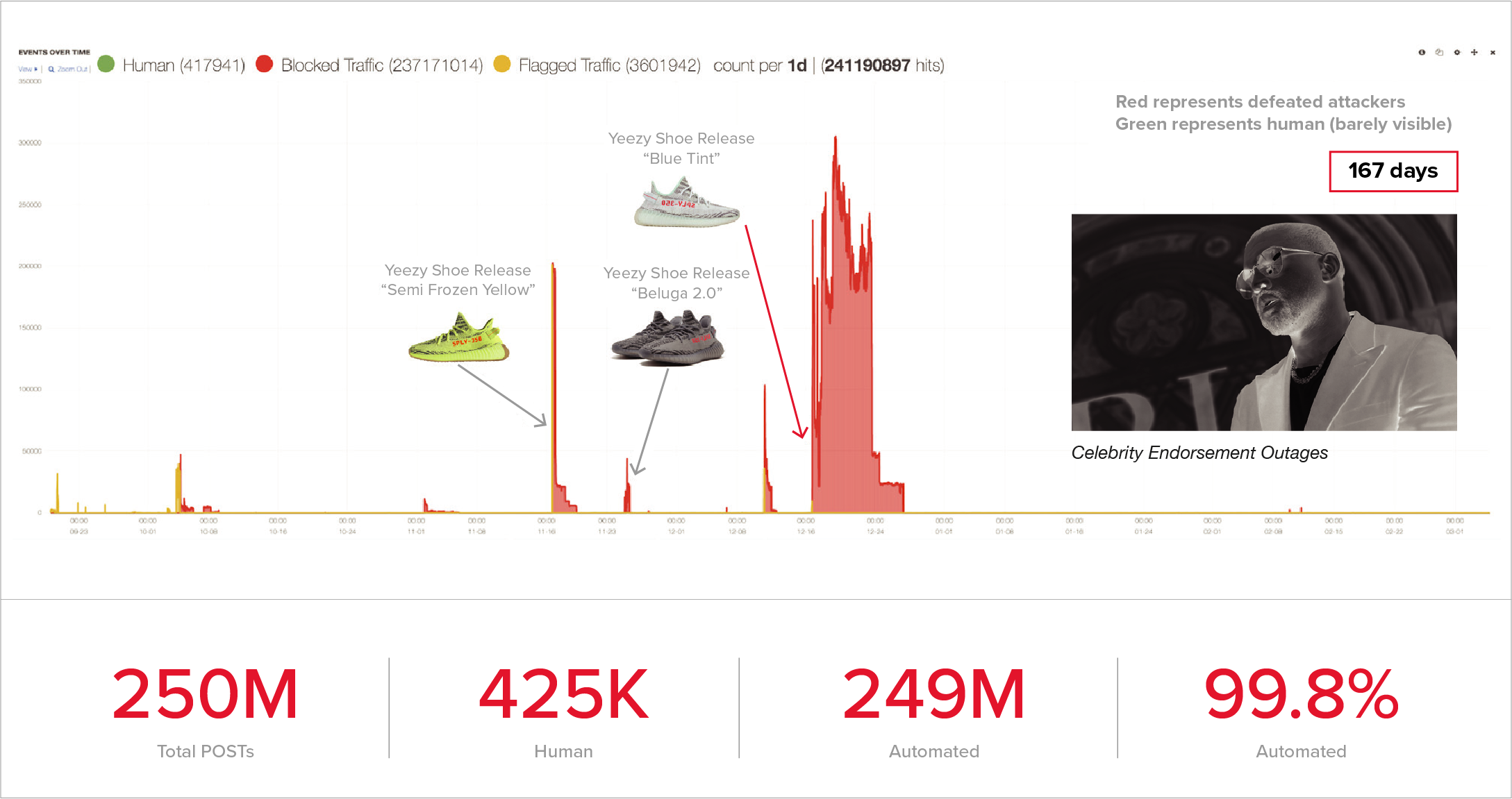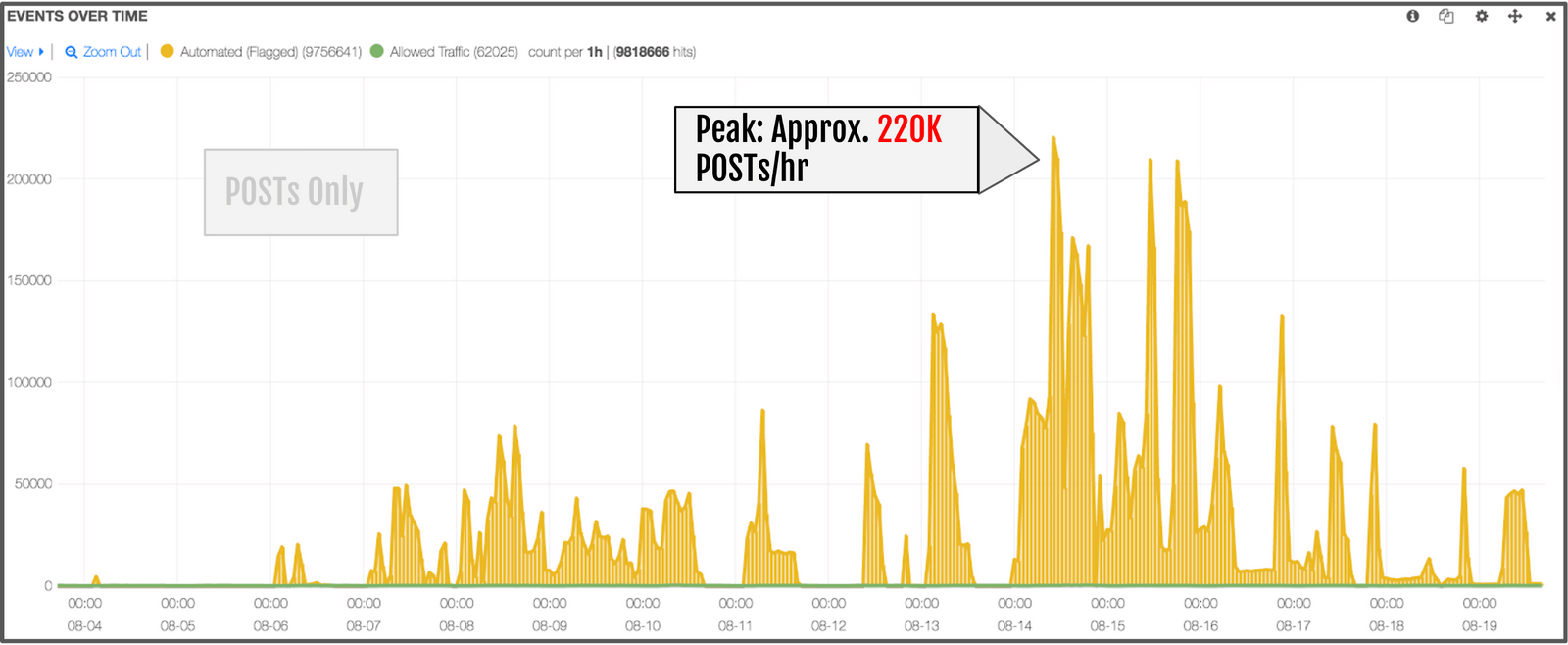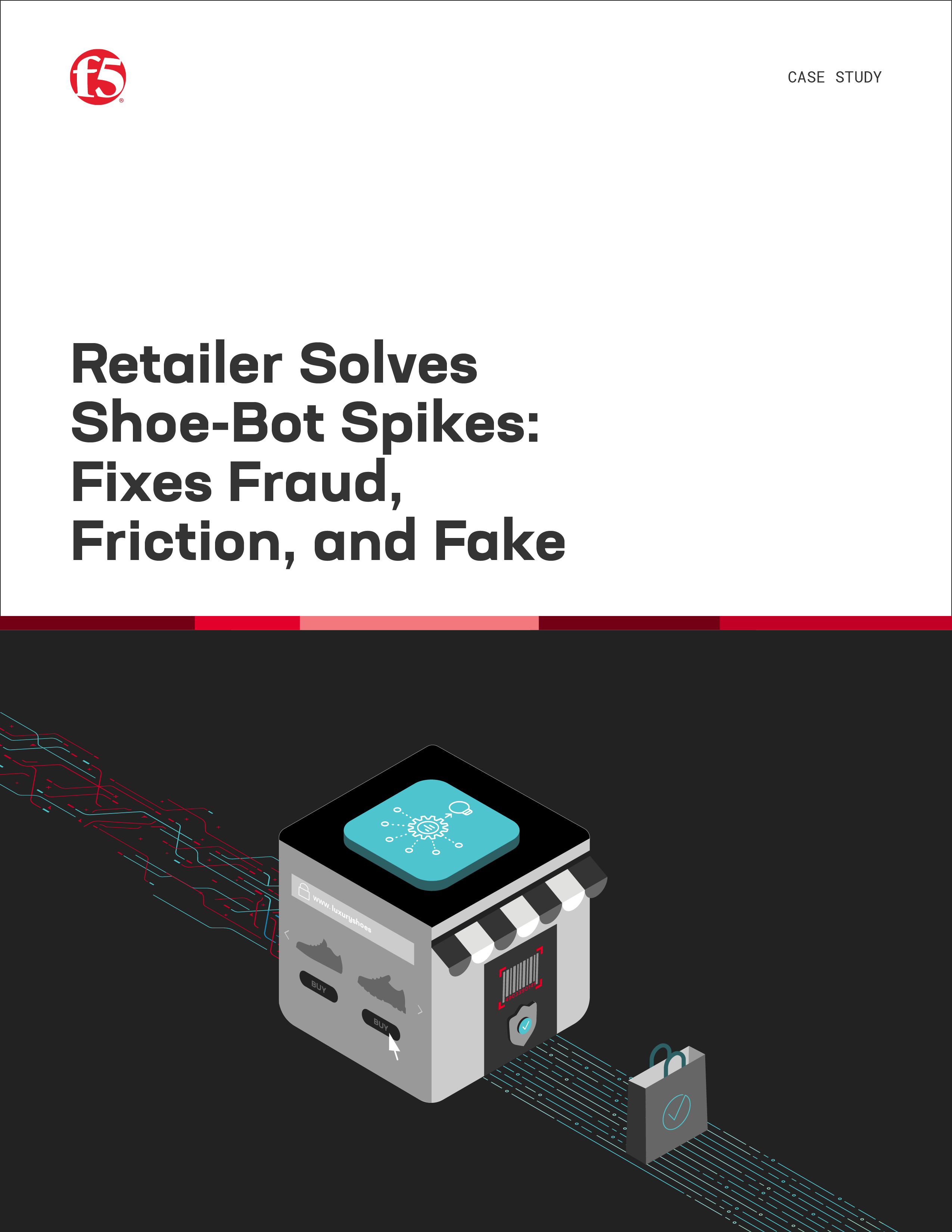Retailer Solves Shoe-Bot Spikes: Fixes Fraud, Friction, and Fake

The Customer
A North American chain of department stores has a robust brand that stands for luxury, legacy, and customer satisfaction. It operate stores in North America and numerous outlets in Asia Pacific.
The retailer’s bedrock belief is in innovating to improve customer experience, both in-store and online. It strives to provide a friction-free shopping experience with easy login, hassle-free gift cards, and stored payment information. It also pioneered “buy online, pickup in-store” (BOPIS).
One of the retailer’s flagship promotions is the fanfare surrounding its release of limited-edition sneakers from marquee brands with a-list celebrity endorsements.
The Challenge: Fraud vs. Friction
The retailer’s dedication to a friction-free shopping experience opened the doors to rapacious automation attackers, resulting in five pain points for the company’s IT and loss departments.
Challenge #1: Fraud and Chargebacks
Attackers launched credential stuffing campaigns against the retailer, using logins from credential spills to perform account takeovers (ATO) and plugging in stored payment information to buy and ship expensive luxury items. The retailer was paying twice: once to the attacker, and again to the customer with the chargeback. Even worse was the loss of customer trust.
Challenge #2: BOPIS Fraud
Attackers also targeted the retailer’s BOPIS system. After they bought items online using stored payment data from compromised accounts, a mule would shuffle up to retrieve the merchandise in-store before the fraudulent charges were noticed by victimized customers.
Challenge #3: Shoe-bot Scalpers
The retailer periodically featured special promotions around limited-edition athletic footwear. The shoe supply was restricted to only a few hundred pairs. Consumers were excited to buy these on “drop day,” but automated shoe-bots were snapping up the entire inventory within seconds of the release, causing high bounce rates and frustration among real human users.
Challenge #4: Shoe-induced Server Outages
The shoe-bots hammered the retailer’s online store relentlessly during the campaign. The retailer knew that most of the traffic polling its shoe sale was automated, but it could not tell the difference between humans and bots. The flood of automated queries led to severe disruption, indicated by high numbers of internal server errors. This impacted the conversion of all other products, not just the footwear.
Challenge #5: Gift Card Cracking
Fraudsters were testing millions of 16-digit gift card number combinations to find cards that had been purchased but not yet used. When the attackers cracked a card, they would suck out the value, either through combining balances or buying merchandise.

The Decision
The retailer first tried to combat the attackers by implementing traditional countermeasures. It added a CAPTCHA during the checkout process, but the result was the opposite of what it were looking for. The CAPTCHA did not reduce fraud at any significant level, and the additional user experience friction led to high shopping-cart abandonment rates among real human users.
The retailer also tried blocking by IP address, but the attackers quickly adapted by using proxies to get around the blocks (proxies for this purpose cost only $2 per 1,000 IPs). Managing the blacklists became a full-time job for the retailer’s IT staff members, leaving them no time to do their actual jobs. Finally, the retailer tried to block by geographic region, but found that this led to too many false positives and, again, did not result in a significant reduction in fraud.
The retailer turned to F5 Distributed Cloud Bot Defense, which could proactively mitigate fraud without adding friction to the customer-experience journey.
The retailer needed a solution that had the following characteristics:
- Maintain convenience (stored payment)
- Had no additional user-experience friction
- Had low false-positive rates
The Outcome
There are two stages to a Distributed Cloud Bot Defense deployment: observation and mitigation. In observation mode, F5 analyzes incoming requests and learns the retailer’s traffic profile to create a tailored defense. F5 and the client collaborate on the most optimal defense with low false positives before Distributed Cloud Bot Defense goes into mitigation mode.
F5 confirmed the retailer’s suspicion that the lion’s share of web traffic was automation. During shoe promotions, automation comprised an astonishing 99.8% of page requests. Bots also made up 98.5% of visitors to the retailers gift card balance page. Overall, the automation of page requests for the web property was 97%.
During observation mode, Distributed Cloud Bot Defense recorded thousands of successful account takeovers (ATOs), projecting an annual rate of more than 50,000 ATOs per year. The attackers’ credential stuffing campaigns were peaking at more than 250,000 requests per hour.
After three weeks of observation, F5 and the retailer went live with mitigation. The results were immediate. In the following 30-day period, the retailer saved over $500,000 in fraud that would have been lost due to account takeovers and gift card cracking.
The attackers twice attempted to retool around F5 defenses. Because Distributed Cloud Bot Defense tracks marauders using hundreds of client signals, they were automatically found and blocked again.
With automation attackers repelled by the service, the origin servers saw only the human visitors—a mere 1% of the previous load. By reducing 99% of traffic, Distributed Cloud Bot Defense lifted “a huge burden off our infrastructure, which had a direct positive impact to revenue.”
Internal server errors went away and real customers could once again buy limited-edition athletic footwear. The retailer was delighted to pull CAPTCHAs from every part of its site, removing user friction and restoring the smooth customer experience journey.

Freedom to Innovate
Finally, and perhaps most significantly, after “seeing how effective F5 was in preventing all types of fraud, from account takeovers to gift card cracking,” the retailer was able to free up staff to focus on its customers, offering interactive experiences and promotions and getting back to itsbedrock belief in innovation.
"From day one, when F5 went into blocking mode, we saw a nearly 100% drop in fraud from automation."
- CISO of retailer
"While customers are loyal, fraudsters are not; once we stopped them, they went away."
- CIO of retailer
